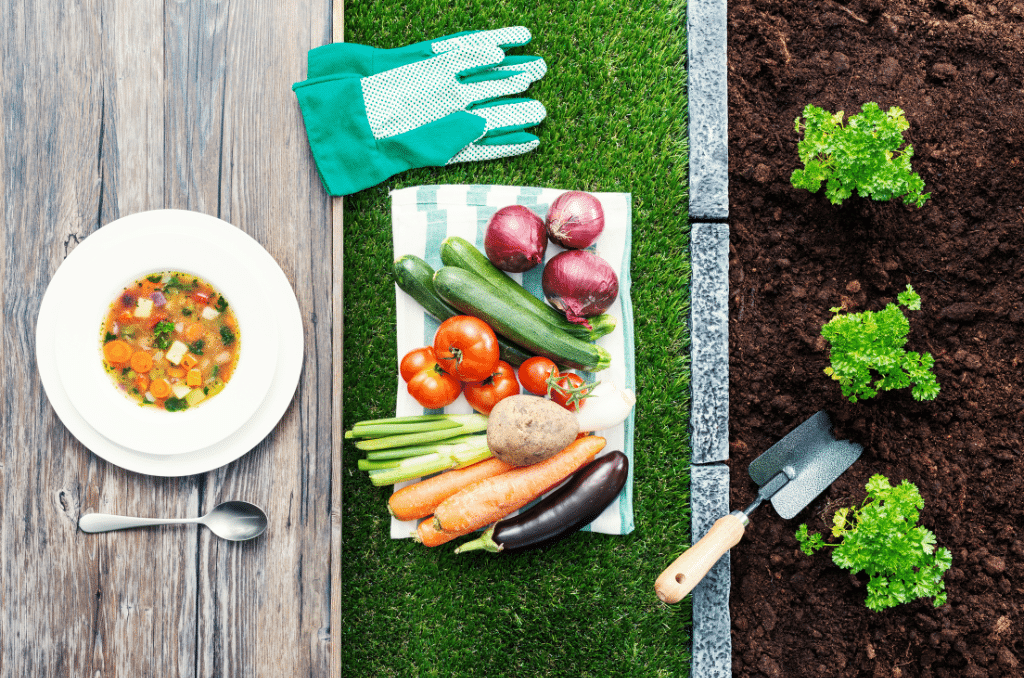In recent years, the concept of “farm-to-table” has gained significant momentum as consumers increasingly seek fresh and locally sourced produce. However, an even more intimate and rewarding experience can be found through “garden-to-table” practices. Garden-to-table produce refers to the act of growing fruits, vegetables, and herbs in one’s own garden and then harvesting and incorporating them directly into one’s meals. This connection with nature and the food we consume offers a plethora of benefits that extend beyond just the plate. From enhanced nutrition and taste to reduced environmental impact and increased self-sufficiency, the advantages of garden-to-table produce are both bountiful and enriching. This essay will explore the multifaceted advantages of this sustainable and hands-on approach to nourishment, shedding light on the transformative power of growing and enjoying one’s food straight from the garden.

Enjoy the perks of garden-to-table produce:
Superior Nutritional Value:
Garden-to-table produce offers a diverse range of fruits, vegetables, and herbs that can be chosen based on their nutritional content and health benefits. When growing their own produce, individuals can select heirloom varieties and nutrient-rich plants that might be harder to find in supermarkets. For example, growing dark leafy greens like kale, spinach, and Swiss chard provides an excellent source of vitamins A, C, and K, as well as iron and calcium. Additionally, home gardeners can incorporate lesser-known but nutritionally dense options like microgreens and sprouts into their diets, boosting overall nutritional intake.
Enhanced Taste and Flavor:
The flavor of freshly harvested garden-to-table produce is a sensory delight that cannot be matched by store-bought alternatives. Commercially grown fruits and vegetables are often bred for qualities like shelf life and durability, sacrificing taste in the process. In contrast, garden-grown fruits ripen on the plant and are picked at the peak of perfection, maximizing their sweetness, juiciness, and overall taste. For instance, biting into a sun-warmed, vine-ripened tomato fresh from the garden is an experience that store-bought tomatoes, typically picked unripe, simply cannot replicate.
Reduced Environmental Impact:
By participating in garden-to-table practices, individuals contribute to sustainability and reduce their environmental footprint. Traditional industrial agriculture relies heavily on fossil fuels for transportation and uses chemical inputs like synthetic fertilizers and pesticides that can harm ecosystems and waterways. Home gardens, especially those utilizing organic and regenerative gardening methods, reduce the reliance on these harmful practices. Moreover, cultivating a diverse array of plants in a garden can promote biodiversity and support local pollinators, such as bees and butterflies, essential for maintaining healthy ecosystems.
Freedom from Harmful Chemicals:
One of the most significant advantages of garden-to-table produce is the ability to control and minimize the use of harmful chemicals. Store-bought produce often undergoes treatments with pesticides, fungicides, and preservatives to prolong shelf life and appearance. By growing organically and using natural pest control methods like companion planting, crop rotation, and introducing beneficial insects, gardeners can produce food that is healthier and safer to consume. This promotes a cleaner and more sustainable environment, benefiting both human health and the surrounding ecosystem.
Connection to Nature and Seasonality:
Engaging in garden-to-table practices offers a unique opportunity to witness and appreciate the natural cycles of life. Planting seeds, nurturing seedlings, and watching plants grow and bear fruit over time fosters a deep connection to the rhythms of nature. Gardeners become attuned to the changing seasons and the effects of weather on their crops. They learn the importance of soil health, the interdependence of living organisms, and the resilience of nature. This connection to nature can be a powerful motivator for sustainable living and environmental stewardship.
Educational and Therapeutic Value:
Gardening is a multifaceted activity that provides numerous educational and therapeutic benefits. For children, a garden can serve as a living science laboratory, teaching them about botany, ecology, and the importance of responsible land stewardship. For adults, gardening offers a form of physical exercise, stress relief, and mindfulness. Working with the soil and plants can be meditative and calming, helping individuals connect with their inner thoughts and find solace in the present moment.
Bottom line:
In conclusion, embracing garden-to-table produce offers a host of valuable benefits that encompass health, environmental stewardship, and a deeper connection to the food we consume. By cultivating our own fruits, vegetables, and herbs, we gain access to fresh, nutrient-rich produce that surpasses the quality of store-bought alternatives. Additionally, reducing the reliance on commercial agriculture reduces the carbon footprint associated with long-distance transportation and chemical-intensive farming practices. Engaging in this hands-on approach to nourishment also fosters a greater appreciation for nature’s cycles and the effort required to produce food, ultimately fostering a more sustainable and mindful lifestyle. Embracing garden-to-table practices not only revitalizes our bodies but also nourishes our souls, inviting us to savor the simple yet profound joys of cultivating, harvesting, and savoring the fruits of our labor.









